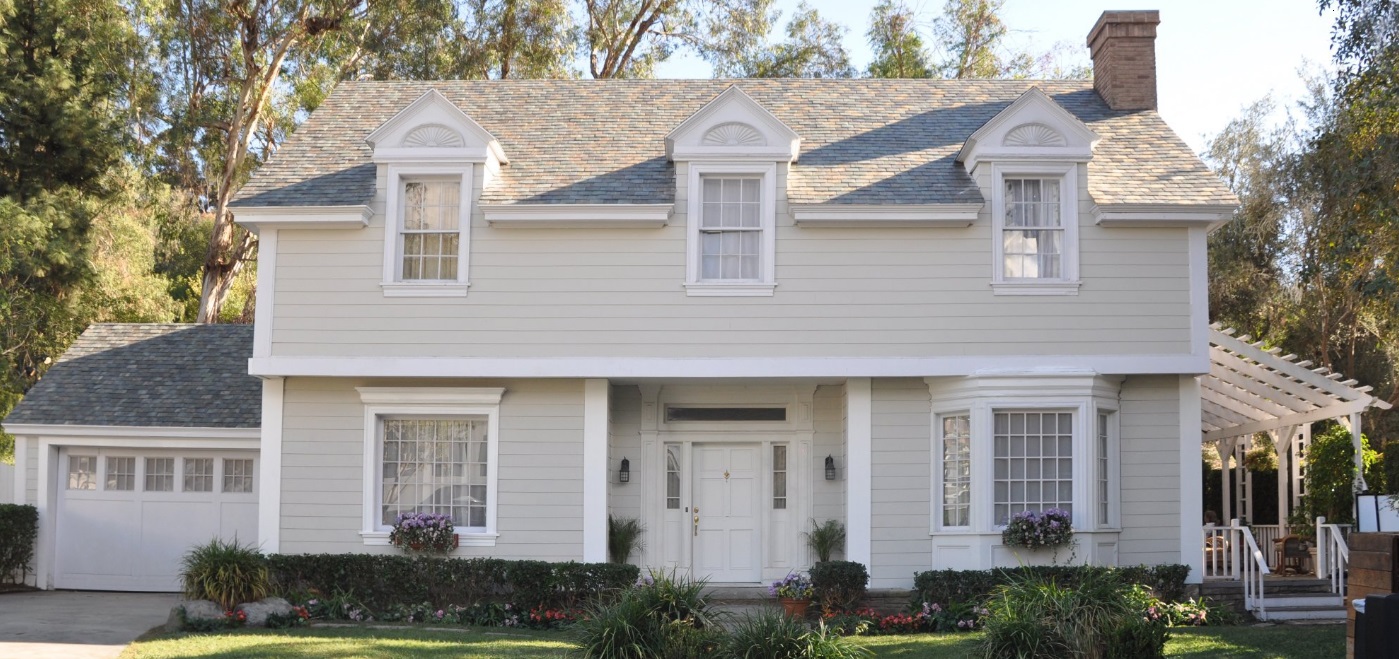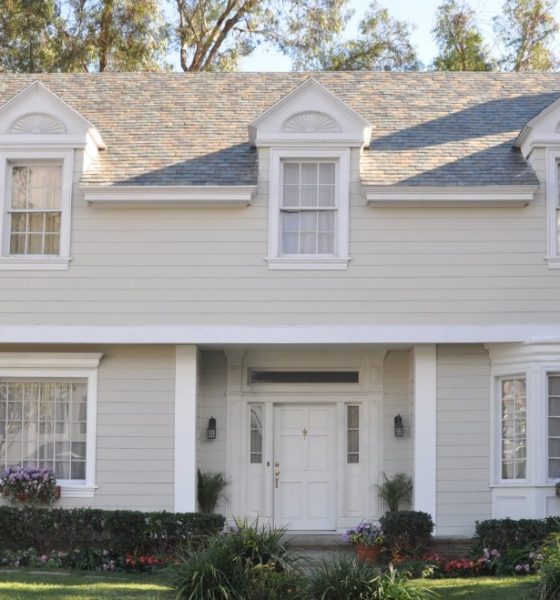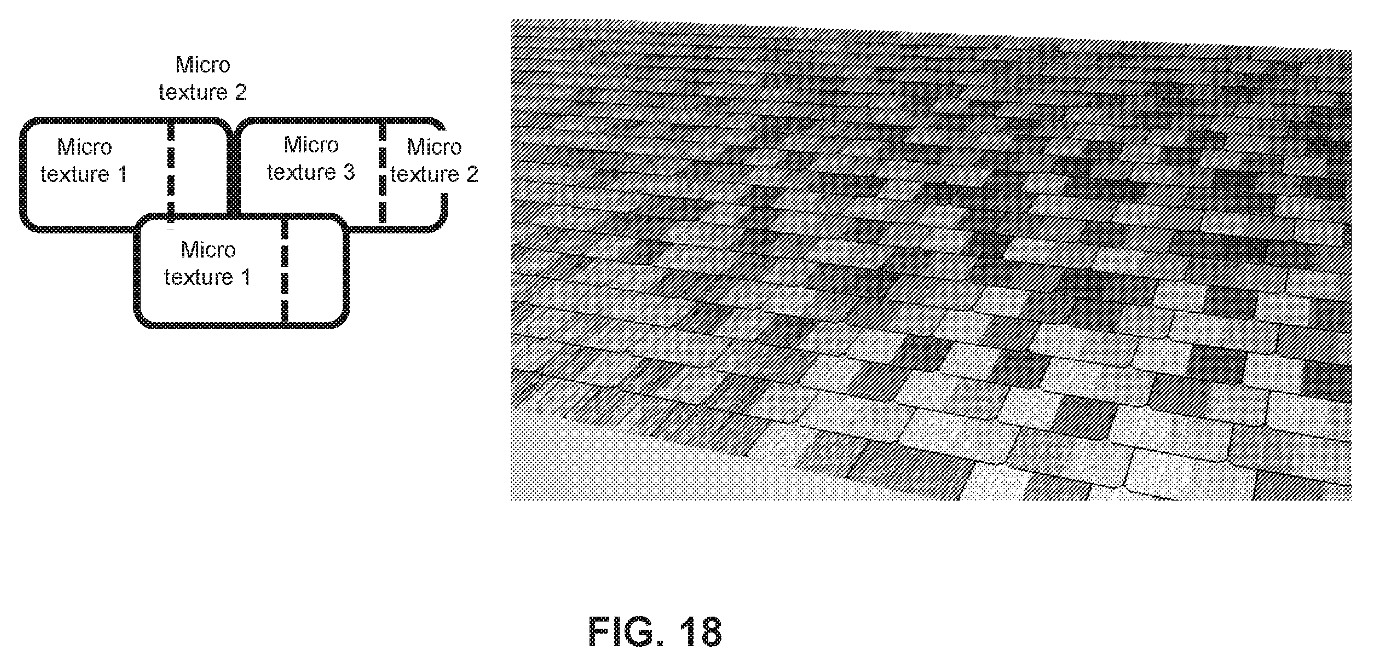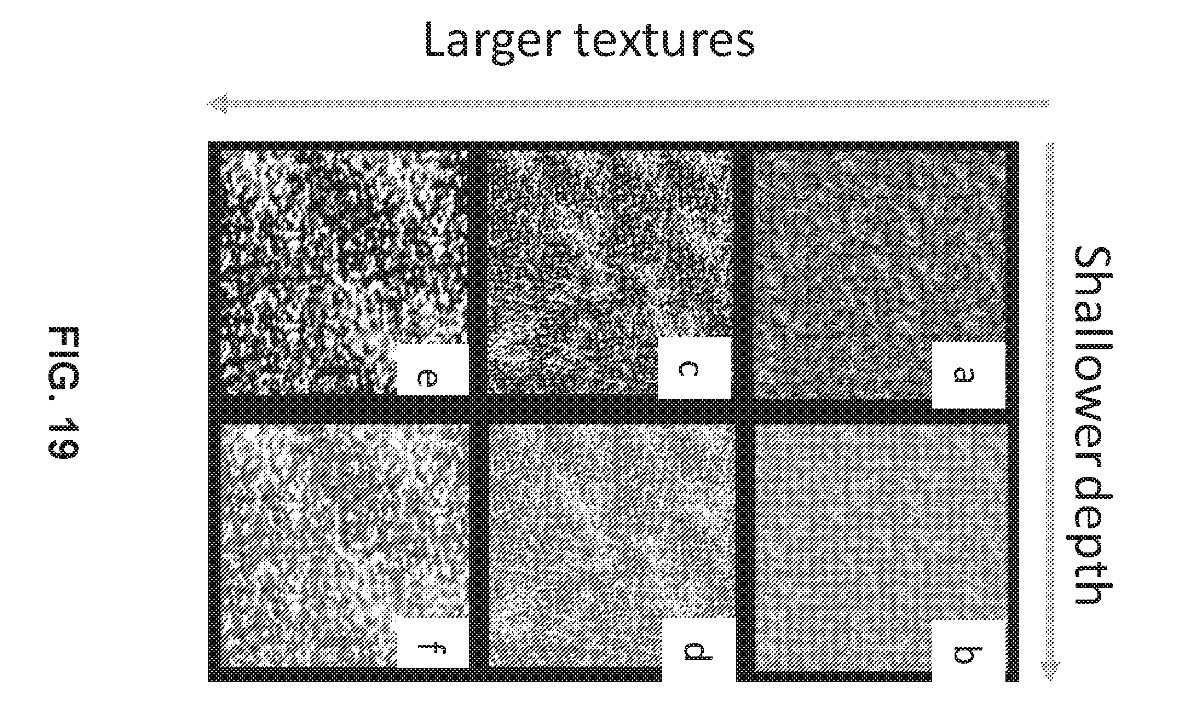

Energy
Tesla Solar Roof takes step towards new variants with textured, colored tile patent
It appears that Tesla is working on some improvements for its Solar Roof tiles that may allow the company to release new variants of the flagship solar product. These potential Solar Roof improvements were discussed extensively in a recently-published patent, which described how the electric car and energy company intends to roll out tiles that feature a better, more seamless appearance.
Tesla’s Solarglass Roof tiles are already among the most aesthetically-pleasing PV systems in the market. A Solar Roof installation involves the setup of both PV and non-PV roof tiles, and according to Tesla, this could present some issues. Since some tiles do not have solar cells in them, there will be some angles or times when it is possible to distinguish which tiles have solar cells and which do not.

Tesla described this issue in the background of its patent, titled “System and Method for Improving Color Appearance of Solar Roofs” and published on February 11, 2021.
“When viewed from a shallow angle (e.g., when the roof is viewed from the street), the dark-colored photovoltaic structures can become visible. The color contrast between the photovoltaic structures and the glass cover can create a scene that is not aesthetically pleasing… Although the non-PV roof tiles can include similar glass covers as those of the PV roof tiles, the absence of embedded photovoltaic structures can result in the non-PV roof tiles having a different color appearance than that of the PV roof tiles.”
Tesla notes that these issues are due to several factors, including tiny imperfections during the Solar Roofs’ manufacturing process or the fact that PV roof tiles tend to look different when viewed under different lighting and at different viewing angles. According to Tesla, there are ways to get around these challenges, such as adopting a robust color-management scheme and some adjustments in the Solar Roof tiles’ manufacturing line.

“First, to reduce the color contrast within a PV roof tile, the PV roof tile can encapsulate polycrystalline-Si-based photovoltaic structures. By controlling the size and pattern of the surface texture of the polycrystalline-Si-based photovoltaic structures, one can reduce the “glow” of the photovoltaic structures. While keeping the front cover of the roof tile transparent, the back surface of the back cover can be coated with a layer of paint that matches the color of the textured surface of the photovoltaic structures to reduce the color contrast within the PV roof tile. A similar paint layer can also be deposited onto the back surface of the non-PV roof tiles.”
“As a result, the color appearance of the PV and non-PV roof tiles can be quite similar. Moreover, when assembling the PV roof tiles, the embedded photovoltaic structures are fed into the production line following a predetermined color pattern such that a majority of PV roof tiles contains solar cells of a similar color and PV roof tiles of different colors are evenly or randomly mixed to prevent clustering of colors on a roof.”
Through these methods, Tesla noted that it would be able to create Solar Roof tiles that feature much less “glow” than typical integrated PV systems. The patent also covered how reactive ion etching (RIE) techniques could be utilized to create textured PV roof tiles. These invoke images of the various Solar Roof variants that Elon Musk unveiled in 2016, which included textured tiles that mirrored the appearance of materials like slate and clay.

“The surface of a polycrystalline-Si-based solar cell can be textured using a reactive ion etching (RIE) technique. In further embodiments, the feature size of the RIE-textured surface can be less than 1 micron (i.e., 0.5 micron or less). In alternative embodiments, the surface of the solar cells can have pyramid texturing with the base width of the pyramids being less than 1 micron (e.g., 0.7 micron or less). Compared to the textured surface of a monocrystalline-Si-based solar cell, the RIE-textured surface of the polycrystalline-Si solar cells can have improved surface uniformity. As a result, the PV roof tiles can have reduced color flop and glow.”
“In alternative embodiments, reducing the cell glow can be achieved through specifically designed anti-reflection coating. This specially designed anti-reflective coating (AR) on a monocrystalline-Si-based solar cell surface can include materials with a higher refractive index than a conventional AR coating (e.g., an indium tin oxide (ITO) coating). More precisely, the specifically designed AR coating can include a layer of SiNx or a SiOxNy /SiNy double layer structure. As a result, the cell glow can be reduced by three- to eightfold with low (e.g., less than 5%) power loss.”
Elon Musk has stated that 2021 will be a key year for the Solar Roof, with the CEO noting that its potential would be evident this year. Considering the company’s ongoing rollout of the integrated PV system and the development of better Solar Roof designs, it may only be a matter of time before more customers of Tesla’s flagship residential solar product would have more design options available.
Read Tesla’s recently-published Solar Roof patent could be accessed here.
Don’t hesitate to contact us for news tips. Just send a message to tips@teslarati.com to give us a heads up.

Cybertruck
Tesla updates Cybertruck owners about key Powershare feature

Tesla is updating Cybertruck owners on its timeline of a massive feature that has yet to ship: Powershare with Powerwall.
Powershare is a bidirectional charging feature exclusive to Cybertruck, which allows the vehicle’s battery to act as a portable power source for homes, appliances, tools, other EVs, and more. It was announced in late 2023 as part of Tesla’s push into vehicle-to-everything energy sharing, and acting as a giant portable charger is the main advantage, as it can provide backup power during outages.
Cybertruck’s Powershare system supports both vehicle-to-load (V2L) and vehicle-to-home (V2H), making it flexible and well-rounded for a variety of applications.
However, even though the feature was promised with Cybertruck, it has yet to be shipped to vehicles. Tesla communicated with owners through email recently regarding Powershare with Powerwall, which essentially has the pickup act as an extended battery.
Powerwall discharge would be prioritized before tapping into the truck’s larger pack.
However, Tesla is still working on getting the feature out to owners, an email said:
“We’re writing to let you know that the Powershare with Powerwall feature is still in development and is now scheduled for release in mid-2026.
This new release date gives us additional time to design and test this feature, ensuring its ability to communicate and optimize energy sharing between your vehicle and many configurations and generations of Powerwall. We are also using this time to develop additional Powershare features that will help us continue to accelerate the world’s transition to sustainable energy.”
Owners have expressed some real disappointment in Tesla’s continuous delays in releasing the feature, as it was expected to be released by late 2024, but now has been pushed back several times to mid-2026, according to the email.
Foundation Series Cybertruck buyers paid extra, expecting the feature to be rolled out with their vehicle upon pickup.
Cybertruck’s Lead Engineer, Wes Morrill, even commented on the holdup:
As a Cybertruck owner who also has Powerwall, I empathize with the disappointed comments.
To their credit, the team has delivered powershare functionality to Cybertruck customers who otherwise have no backup with development of the powershare gateway. As well as those with solar…
— Wes (@wmorrill3) December 12, 2025
He said that “it turned out to be much harder than anticipated to make powershare work seamlessly with existing Powerwalls through existing wall connectors. Two grid-forming devices need to negotiate who will form and who will follow, depending on the state of charge of each, and they need to do this without a network and through multiple generations of hardware, and test and validate this process through rigorous certifications to ensure grid safety.”
It’s nice to see the transparency, but it is justified for some Cybertruck owners to feel like they’ve been bait-and-switched.
Energy
Tesla starts hiring efforts for Texas Megafactory
Tesla’s Brookshire site is expected to produce 10,000 Megapacks annually, equal to 40 gigawatt hours of energy storage.

Tesla has officially begun hiring for its new $200 million Megafactory in Brookshire, Texas, a manufacturing hub expected to employ 1,500 people by 2028. The facility, which will build Tesla’s grid-scale Megapack batteries, is part of the company’s growing energy storage footprint.
Tesla’s hiring efforts for the Texas Megafactory are hinted at by the job openings currently active on the company’s Careers website.
Tesla’s Texas Megafactory
Tesla’s Brookshire site is expected to produce 10,000 Megapacks annually, equal to 40 gigawatt hours of energy storage, similar to the Lathrop Megafactory in California. Tesla’s Careers website currently lists over 30 job openings for the site, from engineers, welders, and project managers. Each of the openings is listed for Brookshire, Texas.
The company has leased two buildings in Empire West Business Park, with over $194 million in combined property and equipment investment. Tesla’s agreement with Waller County includes a 60% property tax abatement, contingent on meeting employment benchmarks: 375 jobs by 2026, 750 by 2027, and 1,500 by 2028, as noted in a report from the Houston Business Journal. Tesla is required to employ at least 1,500 workers in the facility through the rest of the 10-year abatement period.
Tesla’s clean energy boom
City officials have stated that Tesla’s arrival marks a turning point for the Texas city, as it highlights a shift from logistics to advanced clean energy manufacturing. Ramiro Bautista from Brookshire’s economic development office, highlighted this in a comment to the Journal.
“(Tesla) has great-paying jobs. Not just that, but the advanced manufacturing (and) clean energy is coming to the area,” he said. “So it’s not just your normal logistics manufacturing. This is advanced manufacturing coming to this area, and this brings a different type of job and investment into the local economy.”
Energy
Tesla and Samsung SDI in talks over new US battery storage deal: report
The update was related by industry sources and initially reported by South Korean news outlets.

Recent reports have suggested that Tesla and Samsung SDI are in talks over a potential partnership to supply batteries for large-scale energy storage systems (ESS).
The update was related by industry sources and initially reported by South Korean news outlets.
ESS batteries to be built at Samsung’s Indiana plant
As noted in a report from Korea JoongAng Daily, the demand for energy storage systems has been growing rapidly in North America, thanks in no small part to the surge in AI investments across numerous companies. With this in mind, Tesla has reportedly approached Samsung SDI about a potential battery supply deal.
The deal is reportedly worth over 3 trillion Korean won (approximately $2.11 billion) and will span three years, according to The Korea Global Economic Daily. A battery supply deal with Samsung SDI could make sense for Tesla as the company already has a grid-scale battery, the Megapack, which is perfect for industrial use. Samsung SDI could simply supply cells for the EV maker.
Production of the batteries would reportedly take place at Samsung SDI’s joint venture factory with Stellantis in Indiana, which is currently under construction. Samsung SDI recently announced plans to use part of that plant’s EV lines to produce cells for ESS, with a targeted capacity of 30 GWh by the end of next year.
Tesla and Samsung’s partnership
At present, only a handful of manufacturers, including Korea’s LG Energy Solution, Samsung SDI, SK On, and Japan’s Panasonic, are capable of producing energy storage-scale batteries domestically in the United States. A Samsung SDI official issued a comment about the matter, stating, “Nothing has been finalized regarding cooperation with Tesla.”
The possible energy storage system deal adds another layer to Tesla’s growing collaboration with Samsung, which is already in line as a partner in the upcoming production of Tesla’s AI5 and AI6 chips. Early sample manufacturing of the AI6 is expected to begin in South Korea, with mass production slated for Samsung’s Texas-based Taylor foundry when it starts operations.
The AI6 chip will power Tesla’s next wave of high-volume projects, including the Optimus humanoid robot and the autonomous Cybercab service. Musk has called the partnership with Samsung a “real collaboration,” adding that he personally plans to “walk the line” at the Taylor facility to speed up progress.








